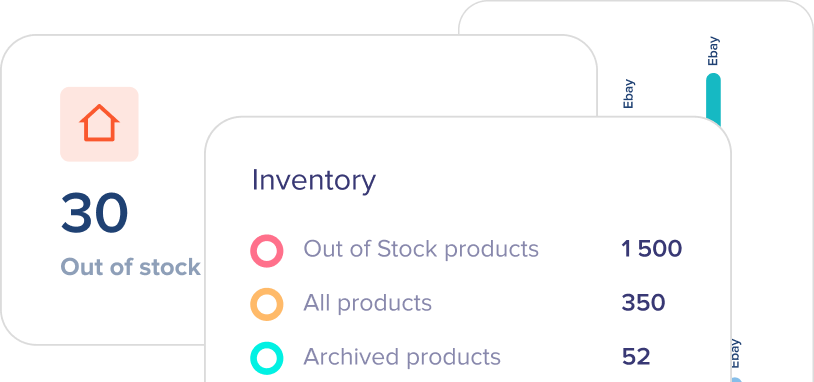Inventory carrying cost is an accounting term used to refer to the sum of all business expenses that occur while holding and storing unsold goods. Those costs include material handling and transportation, warehousing, insurance and taxes, employee and opportunity costs, etc.

Businesses use that number to identify the income levels regarding current inventory volumes and determine the production plans to achieve a favorable income flow.
Main components of carrying costs

Inventory capital costs
Capital costs are the most significant component of inventory carrying costs. It includes the interest paid while acquiring the stock and the cost of invested money used to buy the goods.
Capital costs are a percentage of the total inventory value held. For example, if the company has inventory worth $ 10,000 and reports that 20% of its inventory costs are capital costs, then the capital costs are $2,000.
Inventory service costs
Service costs relating to inventory include tax and insurance expenses, inventory management software, etc. Insurance and tax costs depend on product category and volumes. Of course, higher volumes are associated with higher insurance and tax costs.
Inventory risk costs
When a company carries inventory, ready or not, it will also take risks. An example of an inventory risk cost is when an item stays in a warehouse for a long time, it may become obsolete and lose its value. There are also some risks of theft and administrative errors, such as misplacement of products, mistakes in shipping, which will cause inventory loss.
Inventory storage costs
Inventory storage costs are expenses that arise while managing and operating a warehouse. Storage costs include rental or purchasing costs of a warehouse, utilities, cost of a security system and personnel, handling costs, etc. Depending on inventory volumes, some of those costs can fluctuate.
Importance of inventory carrying costs

Inventory carrying costs create a significant supply chain expenditure. They also impact the cost of goods sold and directly affect a company’s profitability. A clear image of inventory carrying costs would allow business executives to make well-informed and reasonable decisions regarding optimal stock levels, reorder points, inventory management, organization, etc. Continuous monitoring of carrying costs will help businesses to set effective inventory plans. For example, they can evaluate the effectiveness of in-house logistics, estimate if the carrying costs are reasonable for current inventory levels, etc.
So, with a clear understanding of your company’s investments to hold the inventory, you can make the necessary adjustments to increase the cost-effectiveness of inventory expenses.
Inventory carrying cost formula and calculation
Businesses should regulate inventory carrying costs to ensure that those are reasonable for the existing inventory levels and values. They can use this measure to determine the need to reevaluate inventory practices and processes.
To calculate inventory carrying costs, use the following formula:
Inventory carrying costs = total holding costs / total annual inventory value x 100%
First of all, determine the costs of each inventory carrying cost component: capital costs, storage costs, service costs, and risk costs. Then, calculate the sum of all those figures.
Next, determine the value of the unsold goods you have in your warehouses, stores, and storage.
Finally, as the formula suggests, divide costs by the inventory amount to determine how much the company pays per dollar of inventory it holds annually. The figure is usually expressed as a percentage.
Let’s understand the formula with a practical example.
Company XYZ wants to understand the price of having inventory in its warehouses. Following is the financial figures that the company had reported by the end of the previous quarter:
Capital costs: $5,000
Storage costs: $5,000
Utilities: $1,000
Taxes: $3,000
Insurance: $1,000
Total inventory value: $45,000
So, the sum of all the above expenses is $15,000. If we insert those figures into the formula of inventory carrying costs, we get the following:
Inventory carrying costs = $15,000/$45,000 x 100% = 33.33%
This indicates that the carrying costs incurred by Company XYZ are 30% of the total inventory value.
How to reduce inventory carrying costs?
There are many solutions that companies can apply to cut the carrying costs of inventory. Following are some strategies that can help to decrease the spendings for holding the stock.
Decrease on-hand inventory levels
When businesses ensure themselves by holding extra inventory with the “just-in-case thinking,” they might end up dealing with unnecessarily high carrying costs. The idea is simple: large inventory volumes create high carrying costs.
The advice is to perform accurate inventory forecasting to identify better the reorder points and levels. Optimization of inventory levels will help companies save on carrying costs.
Improve inventory turnover
If the inventory sells quickly, it means that it will spend less time in your warehouse. So, the handling costs will be lowered. Check the inventory performance continuously to determine if they are moving at a reasonable rate and make the required adjustments.
To do that, you should determine the market trends and demands and make inventory forecasts accordingly.
Use your warehouse effectively
This is a straightforward yet practical solution. There are cases when businesses do not make the most of the warehouse space they have.
Appropriate organization of the warehouse space can dramatically decrease holding costs. For example, you can consider inserting shelves to optimize vertical space usage or use more containers.
To sum up
Calculating inventory carrying costs is easy once you determine all expenses for holding goods on hand. You can use the formula to assess whether your inventory carrying costs are reasonable for the corresponding inventory levels.







